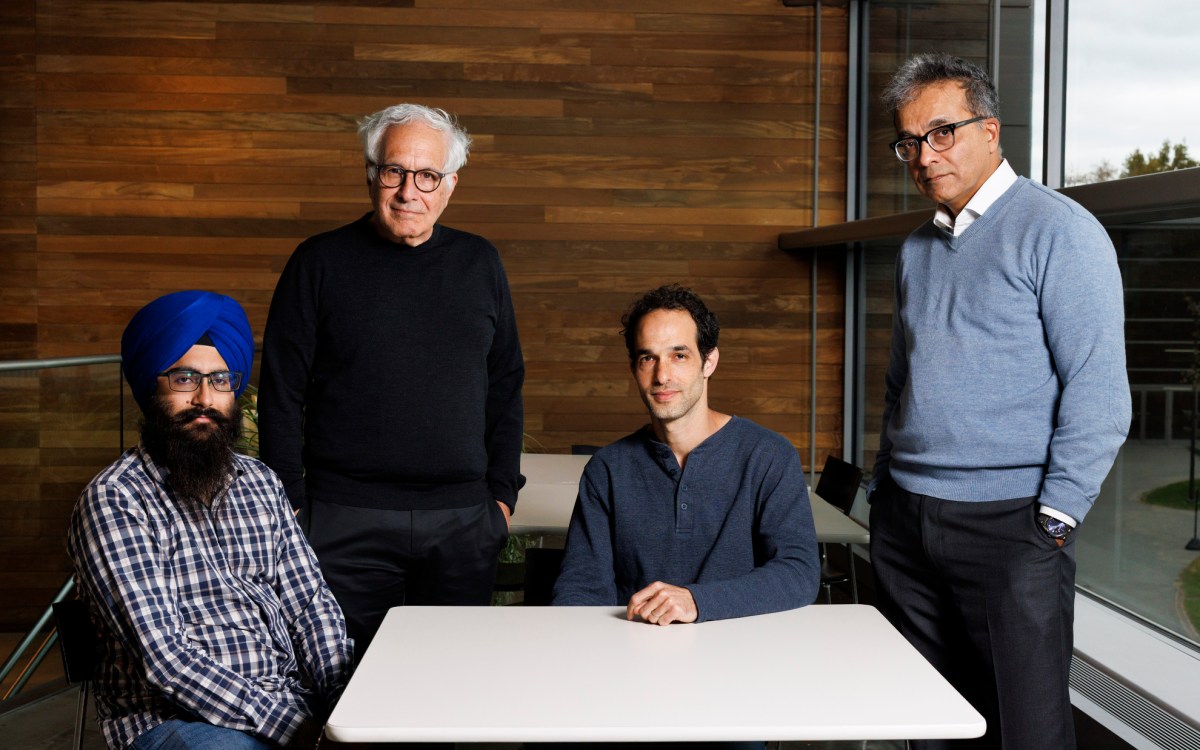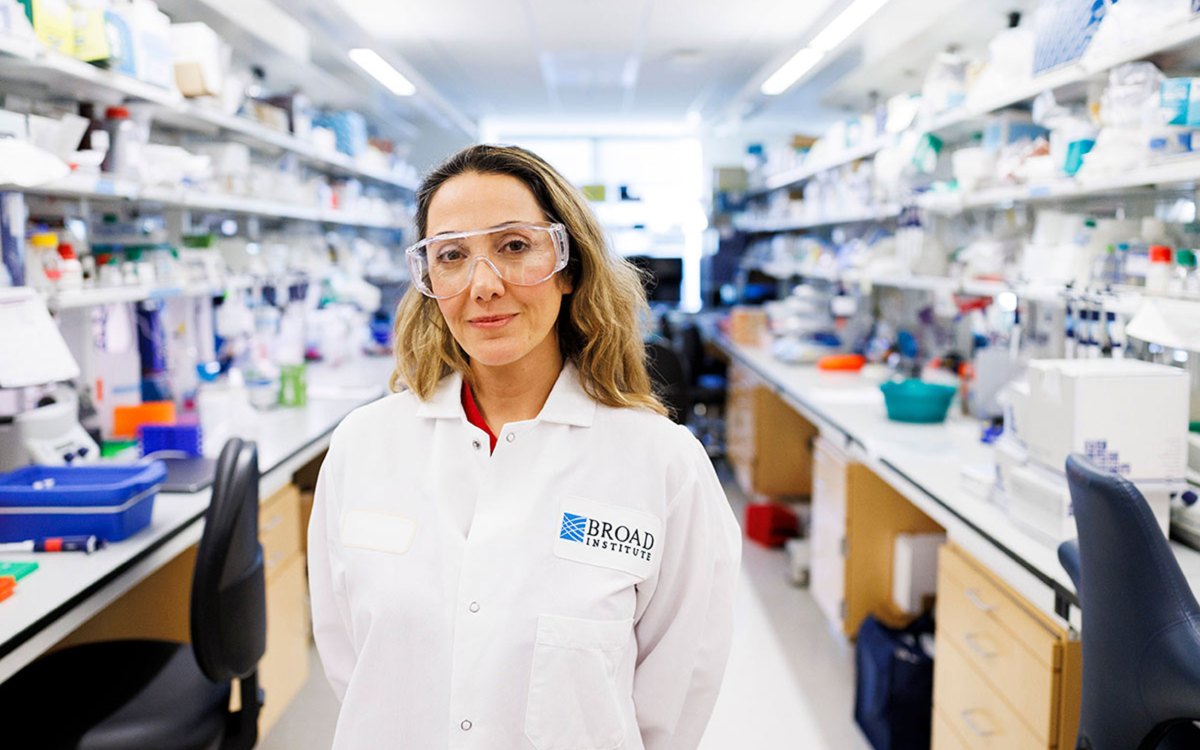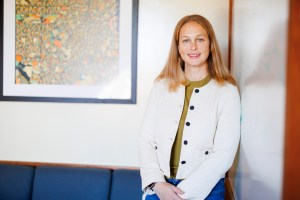Science & Tech
-

Want to speed brain research? It’s all in how you look at it.
New AI-enhanced scanning method promises to boost quest for high-resolution mapping
-

-

‘It just feels good when you solve the hard problems’
Why do students volunteer to take this notoriously difficult math exam? For the fun of it.
-

Stopping the next pandemic
Disease surveillance network faced ‘existential cliff’ despite proven success. Then came the $100 million.
-

Rethinking — and reframing — superintelligence
Microsoft researcher says separating AI from people makes systems dangerous and unproductive
-

First, male gets heated up, then female, and then, you know
Study shows infrared radiation from plants serves as invitation to pollinating insects
-
Cities can help turn the world green
Can green cities save a blue planet? That question was posed last week by Harvard climatologist Daniel Schrag, director of Harvard’s Center for the Environment. The professor of Earth and planetary sciences and professor of environmental science and engineering was one of three technical experts who spoke at a conference March 5 — co-sponsored by Harvard and the city of Boston — on the regional impacts of global warming.
-
Interdisciplinary conference takes micro, macro look at origins of life
How did we get here? That’s not the first line in a hangover joke. It’s a question that has been asked for centuries about the origins of life on Earth. At Harvard last week, an A-list of astronomers, physicists, Earth scientists, and chemists met in the Radcliffe Gymnasium to look at this and other fundamental questions. (What is life? Are we alone in the universe?)
-
President Faust testifies for increase in NIH funding
With the careers of a generation of young researchers threatened by five years of flat National Institutes of Health (NIH) funding, Harvard President Drew Faust and leaders of six other…
-
“…An important experiment for Harvard.”
When the Harvard University Science and Engineering Committee (HUSEC) gathered for its first meeting late last April, it was charged by not one, but two Harvard Presidents. Then President-designate and…
-
Pioneer in spintronics celebrates birthday
What might be Harvard’s oddest birthday party unfolded last week (Feb. 29-March 1). In a lecture hall at Maxwell Dworkin, 50 physicists gathered to share the latest research in spintronics, an emerging branch of their science concerned with the quantum spin states of electrons.
-
J. Craig Venter named visiting scholar
J. Craig Venter, the visionary biologist and intellectual entrepreneur who was a leading figure in the decoding of the human genome, will join Harvard University as a visiting scholar at…
-
Growing U.S. disparities in health not inevitable
In the public health field, there is an ongoing debate as to whether improvement in the overall health of the population is linked to increases or decreases in social inequities…
-
Finding ingenious design in nature
“This,” Joanna Aizenberg says slyly, picking up a latticed tube from her desk in Pierce Hall, “is a glass house you can throw stones at.” The tube, tapered to a close at one end and festooned with a cluster of curious white fibers at the tip, resembles an upturned dog’s tail. It is, in fact, the skeleton of a deep-sea sponge, she reveals, made entirely out of a natural glass. The tube acts as a kind of high-rise apartment building for shrimp that live symbiotically in the sponge’s tissue.
-
Impact of global warming on health debated
Disagreement over the public health impact of global warming emerged in a symposium Monday morning (Feb. 18) at the annual meeting of the American Association for the Advancement of Science. The colloquium, titled “Sustaining Human Health in a Changing Global Environment,” addressed what hazards can be expected as a result of rapid and continuing climate change. For additional AAAS coverage, page 9 http://harvardscience.harvard.edu/topics/harvard-aaas-news
-
Are building environmental and health disasters result of climate change?
Disagreement over the public health impact of global warming emerged in a symposium this morning at the annual meeting of the American Association for the Advancement of Science. The colloquium,…
-
Brain stem role in speech perception reassessed
The brain stem plays a greater role in speech perception than previously thought, according to Jackson T. Gandour, a professor of speech, language, and hearing sciences at Purdue University. “We…
-
Violators of environmental treaties should have to pay
Countries that do not comply with environmental treaties should be hit hard in their pocketbooks, MIT professor Lawrence Susskind said at a special lecture delivered today at the AAAS Meeting…
-
Sharks being hammered by over-fishing
Shark-eating humans are putting pushing this finned species to the brink of extinction, Julia Baum today warned during a presentation at the AAAS annual meeting in Boston. A member of…
-
Roads not taken disappear more quickly than we realize
Researchers have identified a key reason why people make mistakes when they try to predict what they will like. According to the findings presented Sunday at the annual meeting of…
-
Public funding of science no business for public
The public should not be asked to decide which science programs should receive public funding, says Daniel Sarewitz, director of the Consortium for Science, Policy & Outcomes at Arizona State…
-
Solar evidence points to human causes of climate change
It’s getting harder and harder to blame the sun for causing the gradual increase in global temperatures that are now being seen in the climate record, scientists said today. In…
-
U.S. lagging in ability to trace nuclear materials
The United States must renew its resources in tracing unidentifiednuclear materials, specialists say. Michael May, a professor emeritus at Stanford University and the head ofa panel of nuclear forensic experts…
-
Dean of Engineering and Applied Sciences to step down
Venkatesh Narayanamurti, dean of the Harvard School of Engineering and Applied Sciences (SEAS), who for 10 years has directed the renewal and expansion of the former division and its transition…
-
Religious beliefs shape views of science
Religion greatly influences the American public’s views of technology, says Dietram Scheufele, a professor in the Department of Life Sciences Communications at the University of Wisconsin-Madison. Presenting new survey results…
-
Warming of Antarctic oceans endangers marine life
Global warming is endangering marine life in Antarctic waters for the first time in millions of years, said specialists participating on a panel at the American Association for the Advancement…
-
Visualizing science focus of panel
The huge load of data now coming from modern computer systems is so overwhelming that new methods must be devised to allow people to visualize the world in more understandable…
-
Early childhood stress affects developing brain
It is now clear that creating a sustained, reliable, compassionate and widespread system that cares for tiny children born into troubled families is needed in this nation, said Jack P.…
-
Hauser presents theory of “humaniqueness”
Shedding new light on the great cognitive rift between humans and animals, a Harvard University scientist has synthesized four key differences in human and animal cognition into a hypothesis on…
-
The ethics of the organ bazaar
In nearly every country in the world, there is a shortage of kidneys for transplantation. In the United States, around 73,000 people are on waiting lists to receive a kidney.…
-
Compact, wavelength-on-demand Quantum Cascade Laser chip created
Engineers at Harvard’s School of Engineering and Applied Sciences have demonstrated a highly versatile, compact and portable Quantum Cascade Laser sensor for the fast detection of a large number of…
-
HarvardScience website wins top awards in two categories
The Interactive Media Council has named the HarvardScience website “Best in Class” in both the medicine and science categories of its annual Interactive Media Awards competition. In notifying HarvardScience of…
-
Scientists may have identified new target for HIV vaccine
By coaxing the HIV-1 protein to reveal a hidden portion of its protein coat, scientists at Dana-Farber Cancer Institute and Harvard Medical School have provided a newly detailed picture of…
-
E. O. Wilson receives Linean Society Tercentenary Medal
The Linnean Society of London has awarded Edward O. Wilson, Pelegrino University Research Professor, Emeritus, one of three specially-commissioned Tercentenary Medals to honor his outstanding contribution to the world’s understanding…
-
Neuroimaging fails to demonstrate ESP is real
Psychologists at Harvard University have developed a new method to study extrasensory perception that, they argue, can resolve the century-old debate over its existence. According to the authors, their study…
-
Turning on cells with magnetic switches
Harvard scientists have figured out how to turn cells on and off using magnets, an advance with potentially broad applications as researchers around the world work to find new ways…



